The rotator cuff is a group of four muscle; the supraspinatus, infraspinatus, teres minor, and the subscapularis (Figure 1).
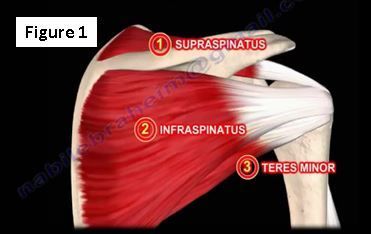
These four rotator cuff muscles all originate from the scapula and insert into the proximal humerus (Figure 2).
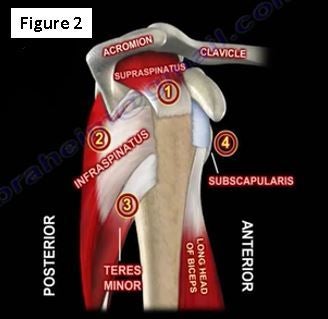
Supraspinatus
The supraspinatus muscle arises from the supraspinous fossa and is inserted into the superior facet of the greater tubercle of the humerus (Figure 3). The supraspinatus abducts the arm and stabilizes the humerus. A tear in the supraspinatus muscle will result in the inability to abduct the shoulder.
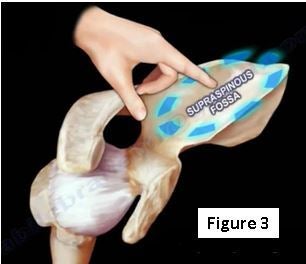
The supraspinatus and the infraspinatus muscles are both supplied by the suprascapular nerve (C5, C6), which arises from the superior trunk of the brachial plexus (Figure 4).
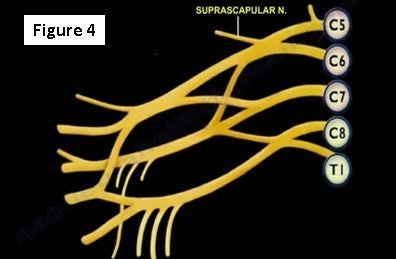
When testing the supraspinatus muscle, a physician can perform the Neer Impingement Test, Hawkin’s Test or the Jobe’s Test. In the Jobe’s test, the supraspinatus muscle is tested with the shoulder abducted to 90°, flexed to 30°, and maximally internally rotated (Figure 5). Downward pressure is resisted primarily by the supraspinatus muscle. Jobe’s test is probably the best test for this muscle function.
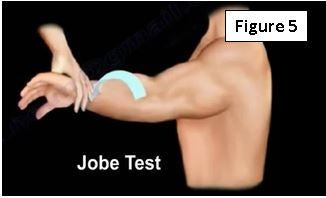
Infraspinatus
The infraspinatus muscle is a thick triangular muscle located on the posterior aspect of the scapula. It originates from the infraspinatus fossa and inserts into the middle facet of the greater tubercle of the humerus (Figure 6). The infraspinatus is the primary external rotator with the arm to the side and it also helps to stabilize the humerus. External rotation of the shoulder occurs in conjunction with the teres minor.

The infraspinatus muscle and the supraspinatus muscles are supplied by the suprascapular nerve (C5,C6), which arises from the superior trunk of the brachial plexus (Figure 7).

When there is a tear of the infraspinatus muscle, the patient will have dysfunction with external rotation of the arm. The infraspinatus muscle is usually evaluated by testing the external rotation of the shoulder with the arm to the side, it is testing the external rotation of the arm against resistance (Figure 8). During the external rotation lag test, the examiner passively rotates the arm into full external rotation. The test is positive when the examiner lets go of the arm and the patient is unable to maintain the position of full external rotation.
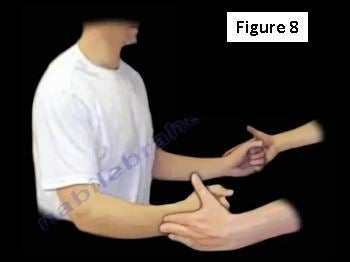
Teres Minor
The teres minor originates at the lateral border and adjacent posterior surface of the scapula and it inserts at the greater tubercle of the humerus (Figure 9). The teres minor muscle is involved in external rotation of the arm along with the infraspinatus muscle (infraspinatus is the primary external rotator of the arm).

The teres minor muscle is innervates by the posterior branch of the axillary nerve (posterior cord C5, C6) (Figure 10).

When testing the teres minor, the physician will conduct the Horn Blower’s Test. This tests the external rotation with the arm held in 90° of abduction (Figure 11). The test is positive if the arm falls into internal rotation.
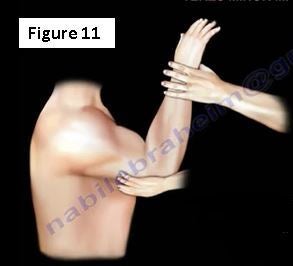
Subscapularis
The subscapularis is a large triangular muscle, which fills the subscapular fossa and inserts into the lesser tubercle of the humerus and the front of the capsule of the shoulder joint (Figure 12). The subscapularis rotates the head of the humerus medially (internal rotation) and adducts the arm. It is the internal rotator of the arm.
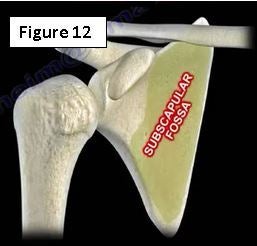
The subscapularis muscle is innervated by the upper and lower subscapular nerves (posterior cord C5, C6, C7) (Figure 13).
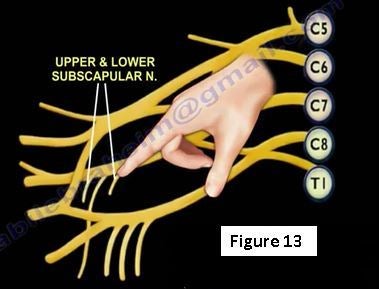
The physician can test the subscapularis muscle by performing the Lift-off test. If the patient is unable to lift the hand off of the lower back, then a tear of the subscapularis tendon is suspected (Figure 14). The lift-off lag test is another test that may be utilized. The examiner will hold the patient’s hand away from the back at the lumbar region and let go. The patient will be unable to keep the hand away from the back if the tendon is torn. A third test that may be used is the belly-press test. The physician has the patient press the palm of the hand against the abdomen with the wrist in a neutral position, this is an example of an intact subscapularis tendon. A positive sign for the belly-press test occurs if the patient is unable to press his belly without wrist volar flexion or the elbow falling posteriorly.
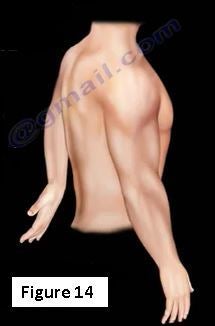
For more information on the rotator cuff, follow the links below:
For more information, visit my YouTube Channel:
